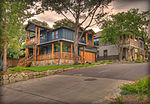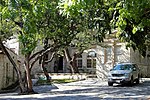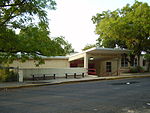Roman Catholic Diocese of Austin

The Diocese of Austin (Latin: Dioecesis Austiniensis) is a Latin Church ecclesiastical territory or diocese of the Catholic Church comprising 25 counties of Central Texas in the United States. The diocese includes 123 parishes and missions and six university Catholic student centers. The diocese stretches from West, Texas, (just north of Waco) in the north to San Marcos in the south to the Bryan - College Station area in the east to Mason in the west. Its largest metropolitan areas are Austin, Bryan – College Station, the Killeen – Temple – Fort Hood area and Waco. The diocese estimates over 625,000 Catholics live in the diocese. As of 2021, it has 216 priests (168 active, 48 retired), 240 permanent deacons (160 active, 80 retired), approximately 30 brothers and 84 sisters serving in the diocese. The Diocese of Austin is a suffragan diocese in the ecclesiastical province of the metropolitan Archdiocese of Galveston-Houston.
Excerpt from the Wikipedia article Roman Catholic Diocese of Austin (License: CC BY-SA 3.0, Authors, Images).Roman Catholic Diocese of Austin
West Gibson Street, Austin
Geographical coordinates (GPS) Address Nearby Places Show on map
Geographical coordinates (GPS)
| Latitude | Longitude |
|---|---|
| N 30.25 ° | E -97.75 ° |
Address
Perla's
West Gibson Street
78704 Austin
Texas, United States
Open on Google Maps








